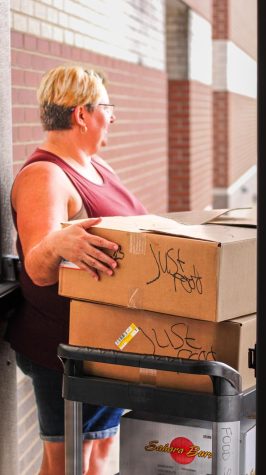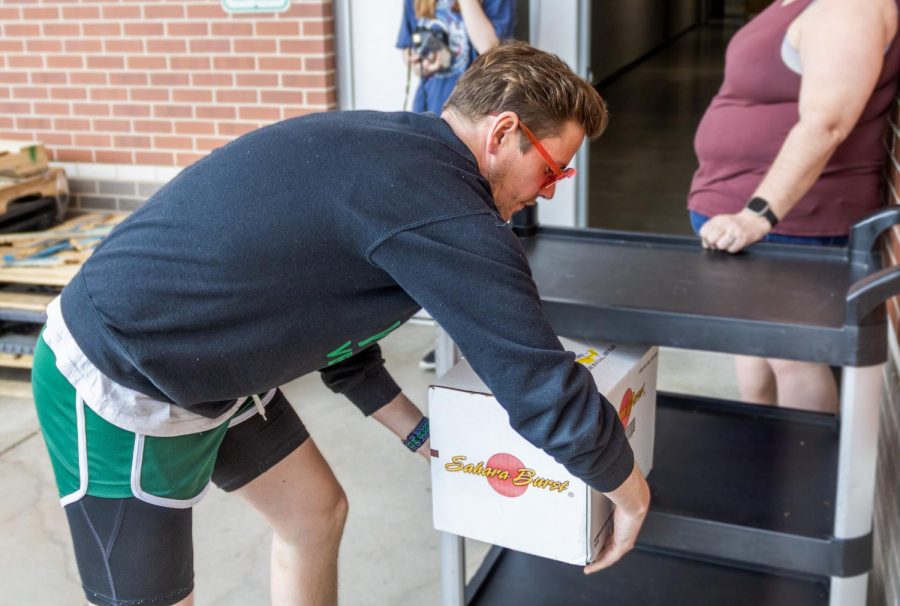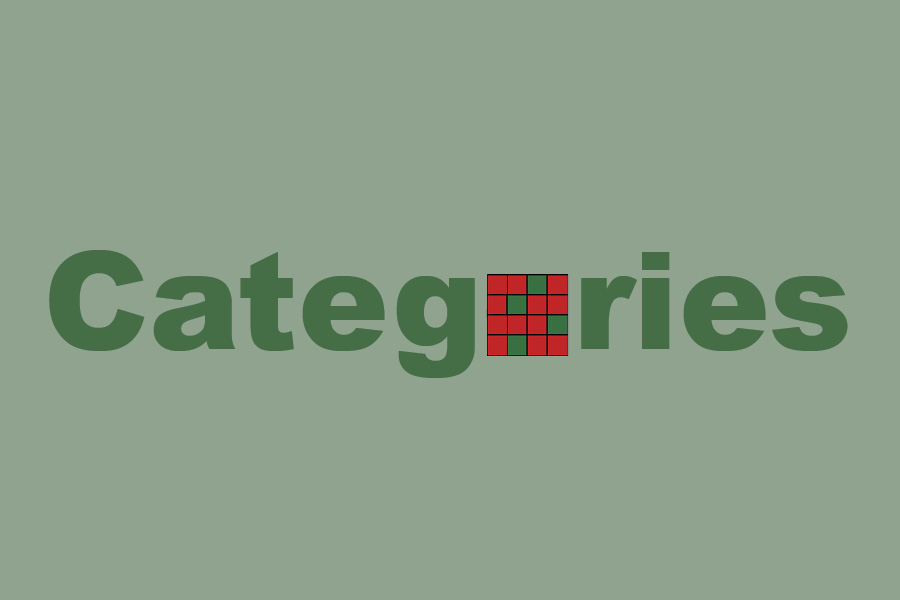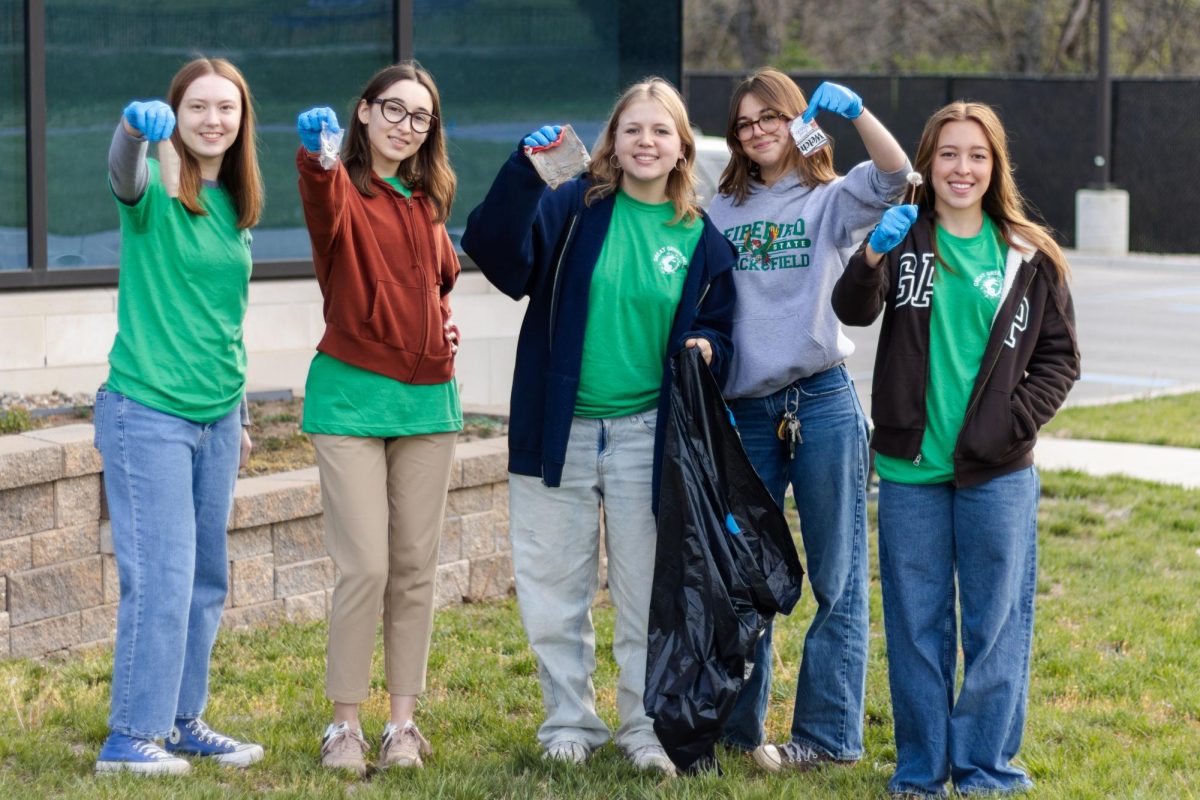FEATURE: JustFood Receives Leftover Food Donations
USD 497 creates donation agreement to partner with JustFood
Picking up a box of juice, JustFood warehouse manager Wayne Briggs collects donations of leftover food from the cafeteria. Briggs picks up extra, unopened food from the kitchen twice a week. These donations, often at least 50 pounds, are taken to the pantry, where anyone can take food free of cost.
May 4, 2023
During April, 855 pounds of leftover lunch food from both public high schools were repurposed to feed the community through just one partnership. Starting in the fall of 2022, USD 497 looked locally to collaborate with the non-profit JustFood to eliminate food waste and feed the Lawrence community.
Since its opening in 2009, JustFood’s mission has been to face hunger and to ensure the Lawrence community is fed adequately. Out of their main pantry located at 1000 E. 11th St, they serve food to 300-600 families everyday, free of charge.
“[The community] is able to save money and refocus their money on things that lead to more life, like housing and being able to make sure their kids are taken care of,” JustFood executive director Brett Hartford said. “Anytime we can do something around food recovery, that means that more people have a chance to live.”
At both Free State and Lawrence High, a combined 909 students eat school lunch every day. On Wednesdays and Fridays at the end of lunch, the leftover food that will not be re-served is prepared for pickup.
From there, JustFood picks up the food donations at 1:30 p.m, where they are transported to their main pantry location at 1000 E. 11th St. On those days, all donations are gone, taken by individuals who utilize the JustFood pantry by their pantry’s closing hour of 3 p.m.
As for donations, JustFood accepts numerous types of food donations such as baked goods, packaged perishable foods and more.
To rule how the food will be used, the organization operates off the Environmental Protection Agency food recovery hierarchy, which is based on how to best prevent and divert wasted food.
Sticking to the integrity of this hierarchy, Hartford said they repurpose any version of food in whatever level of usage they can, overall eliminating food waste.

“We can re-utilize literally everything… As an organization for the past two years we haven’t had to throw away any food of any kind because we’re able to utilize it within that hierarchy,” Hartford said.
Although JustFood accepts various categories of food donations, the USD 497 Nutrition and Wellness Director Julie Henry said the most typical foods they contribute are items that will not stay fresh over a weekend or ones that will not be re-served due to their quality such as pizzas or burgers.
With the district’s donations, Hartford believes there are benefits in providing people with more nutritional, healthier meals that are already prepared beforehand.
“[Pre-cooked meals] are really helpful for some of our community members that may not have a safe place to cook,” Hartford said. “They might be experiencing homelessness… or [not have] a way to cook something in a stove or oven.”
Henry said she finds significance in supporting a non-profit that strives to eliminate food waste and feed the community, and moving forward, hopes to expand the program to other schools to combat hunger.
On the other hand, through this program, Hartford hopes to see his organization stay true to “the overall concept of why JustFood is what it is.”
“We’re trying to tell a story that lowers the barriers for people to receive help, and that people don’t feel like they have to exchange dignity for food,” Hartford said. “You never know when you’re going to need a little bit of extra help and when we all come together and normalize asking for help, we lower the stigma and make access to services easier and less polarized in our community.”









